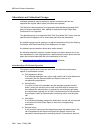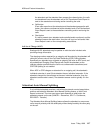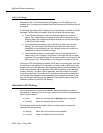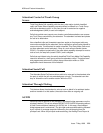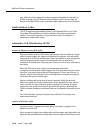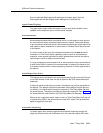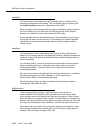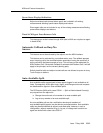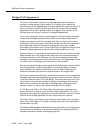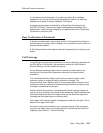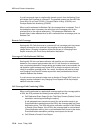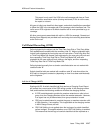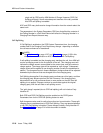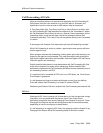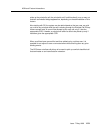
ASAI and Feature Interactions
12-14 Issue 7 May 1998
Bridged Call Appearance
A Domain Control station can have a bridged appearance(s) of its primary
extension number appear at other stations. For bridging, event reports are
provided based on the internal state of bridging parties with respect to the call. A
call to the primary extension number alerts both the principal and the bridged
appearance.Two or more “alerting” events are triggered, one “alerting” for the
principal, and one “alerting” for each of the bridged appearances.
Two or more “connected” events may be triggered, if both the primary extension
number and the bridged appearance(s) answer the call. When the principal or
bridging user goes on-hook but the bridge itself does not drop from the call, no
event report is sent but the state of that party changes from the connected state to
the bridged state. When the principal or bridging user reconnects, another
Connected Event Report is sent. A Drop Event Report is triggered for the principal
and each bridged appearance when the entire bridge drops from the call.
Members that are not connected to the call while the call is connected to another
bridge member are in the “bridged” state. When the only connected member of
the bridge transitions to the held state, the state for all members of the bridge
changes to the held state even if they were previously in the bridged state. There
is no event sent to the bridged user association for this transition.
Both the principal and bridging users may be individually domain-controlled. Each
receives appropriate events as applicable to the controlled station. However,
event reporting for a member of the bridge in the held state is dependent on
whether the transition was from the connected state or the bridged state.
Call Control requests work normally if invoked over the station domain, regardless
of whether both the principal and bridging user(s) are on the connection. However,
Third Party Selective Hold, Third Party Merge, Third Party Reconnect, and Third
Party Selective Drop are not permitted on parties in the bridged state and may
also be more restrictive if the principal of the bridge has an analog set or the
exclusion option is in effect from a station associated with the bridge.
A Third Party Auto Dial or Third Party Make Call call always originates at the
primary extension number of a user having a bridged appearance. For a call to
originate at the bridged call appearance of a primary extension, that user must be
off-hook at that bridged appearance at the time the request is received.
The Party ID Query only reports those members of the bridge in the connected
state. If the entire bridge is in the held or alerting state, then only the principal is
represented in the reply.
The Redirect Call capability is allowed either from the primary or the bridging user
as long as the call is alerting. If successfully redirected, the alerting call will be
dropped from both the primary and bridging user sets.



